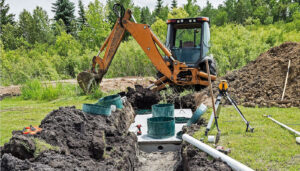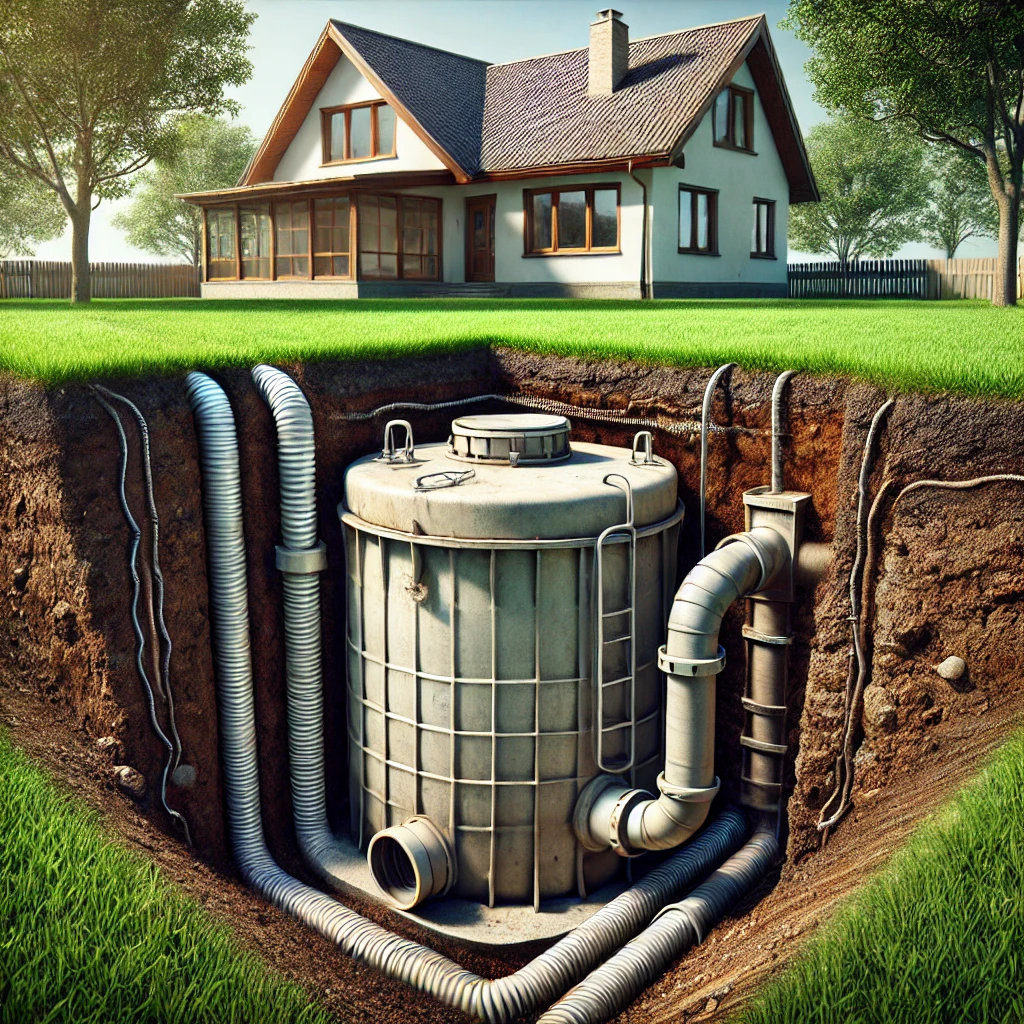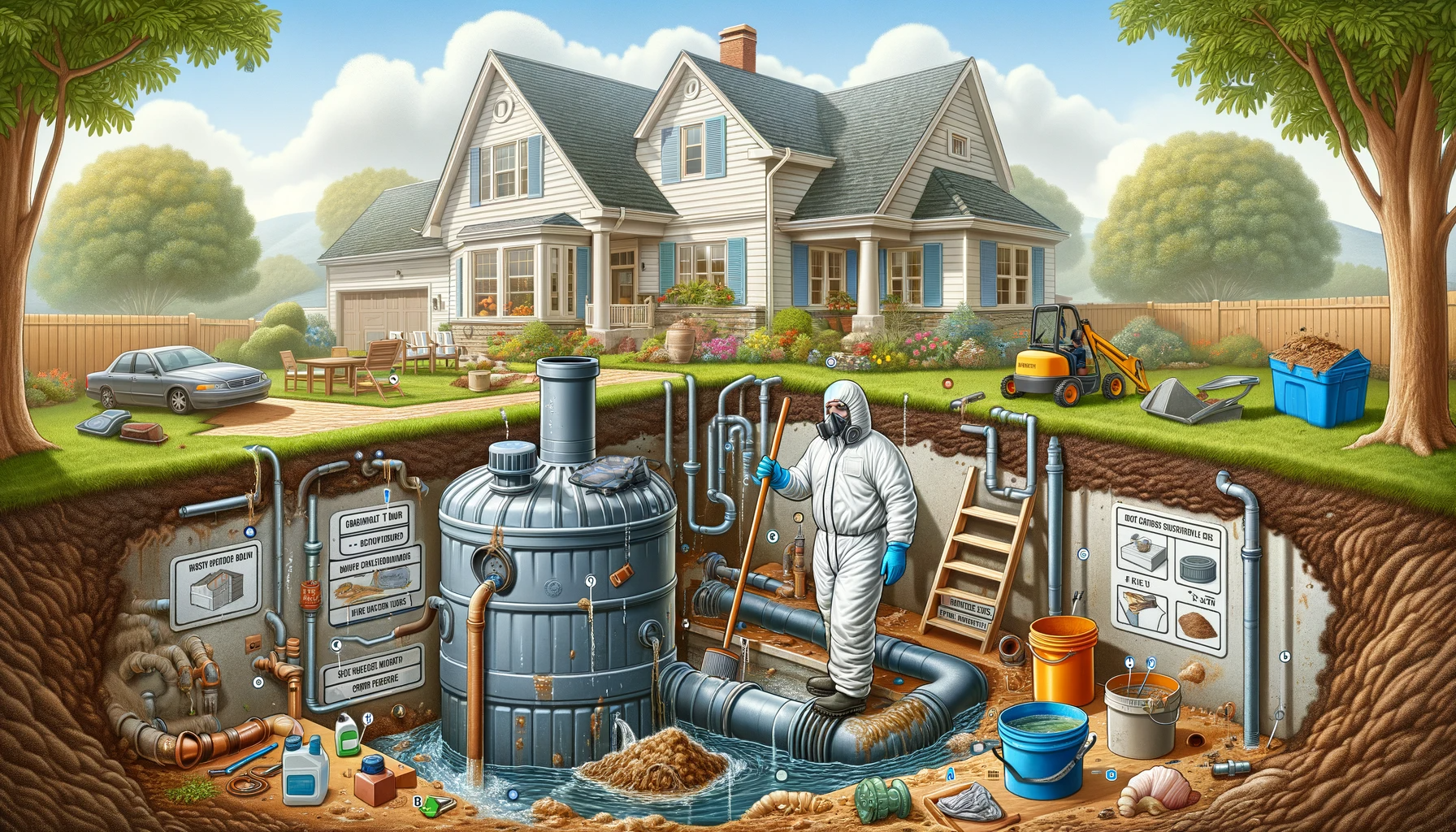Whether you’re a homeowner, prospective buyer, or builder, understanding your septic system is key to avoiding costly repairs, improving efficiency, and maintaining a healthy property.
Septic systems aren’t one-size-fits-all, there are multiple types, each designed for different soil conditions, lot sizes, and environmental needs. In this guide, we’ll break down the most common and advanced septic systems, their benefits, and how to maintain them.

1. Conventional Septic System (Most Common)
How It Works:
- A large watertight underground tank collects wastewater.
- Solids settle at the bottom, while oils/grease float to the top.
- The liquid waste (effluent) moves through pipes to a drain field, where it is naturally filtered.
Pros:
- Cost-effective and simple design.
- Low maintenance compared to advanced systems.
- Well-suited for single-family homes with enough yard space.
Cons:
- Requires sufficient soil depth for drainage.
-
Not ideal for areas with high water tables or poor soil conditions.
2. Chamber Septic System
How It Works:
- Instead of a traditional drain field, this system uses plastic chambers buried underground.
- The wastewater flows into these chambers, where it is gradually filtered into the soil.
Pros:
- More efficient drainage than conventional systems.
- Works well in areas with high groundwater or poor soil.
- Can handle seasonal use, great for vacation homes.
Cons:
- Limited availability in some areas.
-
Requires more frequent maintenance.
3. Aerobic Treatment Unit (ATU)
How It Works:
- Adds oxygen to the septic tank, encouraging bacteria to break down waste faster.
- Some systems include a final treatment step like disinfection before releasing effluent.
Pros:
- Works in small yards and areas with poor soil.
- More environmentally friendly, reducing harmful contaminants.
- Faster treatment means cleaner wastewater.
Cons:
- Requires electricity to operate.
-
More expensive upfront and needs regular maintenance.
4. Mound Septic System
How It Works:
- Instead of an underground drain field, the system pumps effluent to a raised sand mound.
- The mound acts as a filter before wastewater enters the soil.
Pros:
- Ideal for areas with shallow soil or high groundwater.
- Prevents groundwater contamination.
Cons:
- More expensive to install and maintain.
-
Takes up a lot of yard space and can affect property aesthetics.
5. Drip Distribution Septic System (Best for Limited Space)
How It Works:
- Uses a network of small pipes buried shallowly in the soil.
- Wastewater is distributed in slow, controlled doses.
Pros:
- Requires less excavation than other systems.
- Prevents soil oversaturation.
- Works well in areas with high environmental restrictions.
Cons:
- Needs a large tank for dosing control.
- More maintenance and electricity are required.
6. Sand Filter System
How It Works:
- The effluent passes through a sand-filled bed before being released into the soil.
- Acts as a natural filtration system.
Pros:
- Works in areas with high water tables or poor soil.
- Provides extra wastewater treatment, reducing contamination.
Cons:
- Higher installation and maintenance costs.
- Requires more frequent servicing than traditional systems.
7. Advanced Treatment Systems (Newest Innovations)
How It Works:
- Uses high-tech filtration methods like biofilters, recirculating sand filters, and constructed wetlands.
- Designed to remove more contaminants than traditional systems.
Pros:
- Perfect for environmentally sensitive areas.
- Higher levels of treatment mean cleaner, safer effluent.
Cons:
- Higher upfront and maintenance costs.
-
May require permits and professional servicing.

How to Identify Your Septic System
If you’re unsure which system you have, try these steps:
- Check property records: Your home’s paperwork or septic permits should list system details.
- Look for visual clues: Mound systems have visibly raised areas, while ATUs have an electrical control panel.
-
Consult a septic professional: A licensed inspector can confirm your system type and maintenance needs.
Choosing the Right Septic System for Your Home
If you’re building a home or replacing an old system, here’s what to consider:
- Soil Type: Conventional systems need well-draining soil, while mound or sand filters work in areas with poor drainage.
- Lot Size: Small yards may need ATUs or drip systems instead of large drain fields.
- Environmental Impact: Homes near water sources should consider advanced treatment systems.
-
Budget: Conventional systems are cheaper, but high-tech solutions save money in the long run by preventing contamination and repairs.


